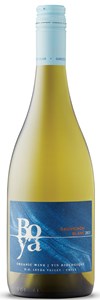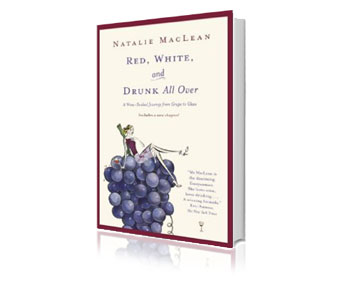Adam Puchta Winery

Adam Puchta Winery
1947 Frene Creek Road
Hermann, Missouri
USA 65041
Phone: (573) 486-5596
http://www.adampuchtawine.com/
Contact: Michael Rouse
Email: [email protected]
Adam Puchta Winery, located off Hwy. 100 on the banks of Frene Creek about 2.5 miles southwest of Hermann, is the oldest family farm winery in Missouri. Its true uniqueness, however, lies in the fact that the same family has continuously owned it since 1855.
Bavaria to Hermann
The story of the winery actually begins on May 25, 1839, when Adam Puchta, a lad of seven, along with his older brother Friedrich, his father John Henry Puchta, his step-mother, and three stepsisters ranging in age from five months to five years left the port of Hamburg, Germany for the United States. The family actually emigrated from Oberkotzau, a village in the northeastern corner of Bavaria near the Czech border, where Adam’s father was a butcher.
Upon the family’s arrival in Hermann they settled on a 40-acre tract of land north and adjacent to the land on which the winery is located. Adam’s father built a one-room log cabin, approximately 16’ x 20’ for his family of seven, and a small wine cellar with a press house over it. He purchased the land in 1841 and in 1849 purchased 40 more acres, which is now part of the winery farm.
The Lure of Gold
Adam and his brother worked on the family farm until the spring of 1853, when the Puchta brothers and twelve other men left Hermann for California in quest of gold and riches. This group was the first of three to make the trek west. They left on April 15 with three ox teams, six horses and 165 head of cattle.
The trip took four months and twenty days. On reaching the Sierra Nevada Mountains they were met by cattle buyers and sold their stock at a profit. The gold-seekers abandoned their wagons, as they served no further purpose. The party broke up, the Puchta brothers and four others going to the diggings at Downieville on the western slope of the mountains, where they staked off a claim along a good-sized creek. Each man was allowed 100 feet along the creek and the land behind those 100 feet running back to the mountains.
Less than two years after his departure from Hermann, Adam returned to Hermann by way of Nicaragua.
Gold to Grapes
Apparently he had met with some measure of success in California, as on February 28, 1855, Adam purchased 40 acres of land from his father. He built a small log cabin and began clearing land for crops and vineyards. In 1855 he produced his first wine using wild grapes and grapes from his father’s vineyard. This first production of wine by Adam Puchta establishes the genesis of Adam Puchta Winery and is the cause for celebration in 2005.
Adam’s Marriage and Family
Adam married Clementine Riefenstahl, daughter of George Riefenstahl. George, his wife Virginia and five children were among the first seventeen settlers in Hermann. Adam’s father-in-law, deceased by the time of his marriage, had been a noted winemaker in Hermann who in April 1847 won a “first-class award in St. Louis” for his wine from the Catawba grape, a wine which he dubbed the “Riefenstahler.”
Adam and Clementine first lived in a log cabin but soon built a stone residence, which today after some restoration and remodeling serves as the sales building for Adam Puchta Winery.
In 1858 Clementine died in childbirth. In February 1859 Adam married Bertha Riefenstahl, Clementine’s older sister and the first girl baby born in Hermann.
Adam and Bertha had one child, Henry John Puchta, born April 4, 1861.
Growth of the Winery
Adam’s early wine production took place in the small cellar under his residence. Within a short time he built a large arched limestone cellar. The stone for both the residence and the wine cellar was quarried on the winery property. A press house and fermentation room was built directly above the cellar and on top of the foundation wall. The cellar and original press house remain today.
Unlike many other vintners in the area Adam Puchta never abandoned his general farming operation, so that in 1870, in addition to wine, he produced wheat, corn, oats and barley.
In 1882 Adam constructed a brick one-and-one-half story residence just a few feet west of the stone residence. That residence is the third of four early structures on the winery farm, which have been preserved through its long history. The fourth is a brick gable roof smokehouse to the rear of the stone building.
In the 1880s Adam’s son Henry joined him in the family farm winery business and operated under the name of Adam Puchta & Son Wine Company. He began to expand the winery’s production.
Henry married Amanda Buddemeyer on June 3, 1896, and the couple lived with his parents. Henry and Amanda had two children, Pearl Ethel and Everett Adam, born in 1898 and 1900.
Prohibition
The 18th Amendment to the U.S. Constitution went into effect in 1920. Prohibition destroyed the wine industry nationwide. It dealt a particularly devastating blow to the economy of the Hermann area, because winegrowing was the major industry of the area.
The grapevines were pulled out and the vineyards were converted to cropland. Henry and Everett Puchta expanded their production of crops. This father and son, like many other farm families, continued to make wine for family use from a few retained vines, from elderberries and blackberries, and even from dandelions. This practice continued until Everett’s death in 1988.
Rebirth of the Industry
In December 1933 when Prohibition ended there were no commercially operating wineries in the Hermann area. It was almost 30 years after Prohibition ended before there was a rebirth of the wine industry in the area.
In 1989 Everett’s son Randolph, born in 1928, and Randolph’s son Timothy, born in 1956, began planning the reopening of the Adam Puchta Winery as a commercial enterprise. Randolph had pursued a career in law and Timothy a career in respiratory therapy. Timothy, however, had a dream of one day reopening the winery, and with his father’s encouragement and support, that dream was realized when sales and shipment of wine once again began in 1990.
Winemaking – Then and Now
Only old out-dated wooden winemaking equipment remained in 1989 when the rebirth of Adam Puchta Winery occurred. From the time of Prohibition the Puchta family had preserved the dual stone hand operated grape crusher, the two-man screw-type press and one large fermenting vat. This original equipment will be on display during the 150th Anniversary celebration.
Today all of the winemaking equipment is made of stainless steel—the hoppers and augers, the crusher and destemmer, the pumps, the fermenting tanks and storage tanks, the filters, and the automatic bottling equipment. Most of the tanks are refrigerated.
Pre-Prohibition family farm wineries marketed most of their wine by shipping five, ten, twenty and thirty-gallon kegs and barrels to taverns in Hermann, New Haven, Washington and St. Louis. Local customers would bring their glass bottles or earthen jugs to the winery for refilling. Most family farm wineries did not bottle or label their products.
Adam Puchta Winery Today
Today Adam Puchta Winery has a production capacity of 62,000 gallons. Wine is sold in both the retail market on the winery premises and through mail order to states that allow such trade and in the wholesale market. Adam Puchta wines have won many awards in Missouri, as well as nationally and internationally. The Winery is open seven days a week, except New Year’s Day, Easter, Thanksgiving Day and Christmas Day.
The demand for Puchta wines has increased steadily since 1990 and that trend continues. Adam Puchta & Son Wine Co. proudly continues a family tradition begun 150 years ago in beautiful Frene Creek Valley.
Winemaker: Michael Rouse
Update Winery information Submit new wines to be posted Wineries of America
Although there aren't any wines associated with this winery, Natalie may have reviewed brands that this winery produces and she just didn't know to designate this winery in her tasting note. You can search here for specific brands.
 Best Books of the Year
Best Books of the Year Best Books of the Year
Best Books of the Year

















